Adirondack chairs are a classic addition to a front porch or back patio, but unfinished chairs require protection to withstand the elements. This guide will walk you through the process of properly staining your chair so it’s ready to face rain and sun. In the video above, Jen Largesse from House One demonstrates how to apply a durable, professional-looking finish to an Adirondack chair.
Choosing the Right Stain for Your Adirondack Chair
Selecting the appropriate stain is the first step to giving your Adirondack chair the right look and protection. Consider a stain’s color, durability, longevity, and protection features.
Types of Stain
Stain isn’t a one-size-fits-all product. Common types of stains for outdoor furniture include the following:
- Oil-based stains: These penetrate deeply into the wood, offering excellent protection and a natural look.
- Water-based stains: These are easier to clean up, and they dry faster than oil-based stains.
- Solid stains: Solid stains provide opaque coverage, hiding the wood grain but offering maximum protection.
- Semi-transparent stains: These allow the wood grain to show through while still providing color and protection.
For this project, Largesse used Olympic Elite Advanced Stain and Sealant in One, a semi-transparent exterior product that preservers the wood grain and provides waterproofing in a single coat.
Color Selection
Choose a color that complements your outdoor space and personal style. Depending on your home’s exterior, you can choose natural wood tones for a classic look, bold colors for more vibrance, or neutral shades to blend with your outdoor furniture.
Durability and Protection
Look for stains that provide UV protection to prevent fading, water resistance to guard against moisture damage, and mold- and mildew-resistance for longevity and durability.
Preparing Your Workspace for Staining
Before you begin staining, you need to set up a proper workspace and collect the necessary materials for a smooth and mess-free process.
You’ll need the following items to stain your Adirondack chair:
- Stain
- High-quality synthetic bristle brush
- Drop cloth
- Safety glasses
- Nitrile or neoprene gloves
- Lint-free cloths
- Paint stir stick
- Respirator mask (if working in a poorly ventilated area)
Setting Up the Work Area
Choose a well-ventilated space, ideally outdoors or in a garage with the door open. Lay down a drop cloth to protect the ground or floor from stain drips. If possible, place the chair on blocks to make it easier to stain the base of each leg.
Preparing the Chair for Staining
Proper preparation will give you a professional-looking finish on your Adirondack chair.
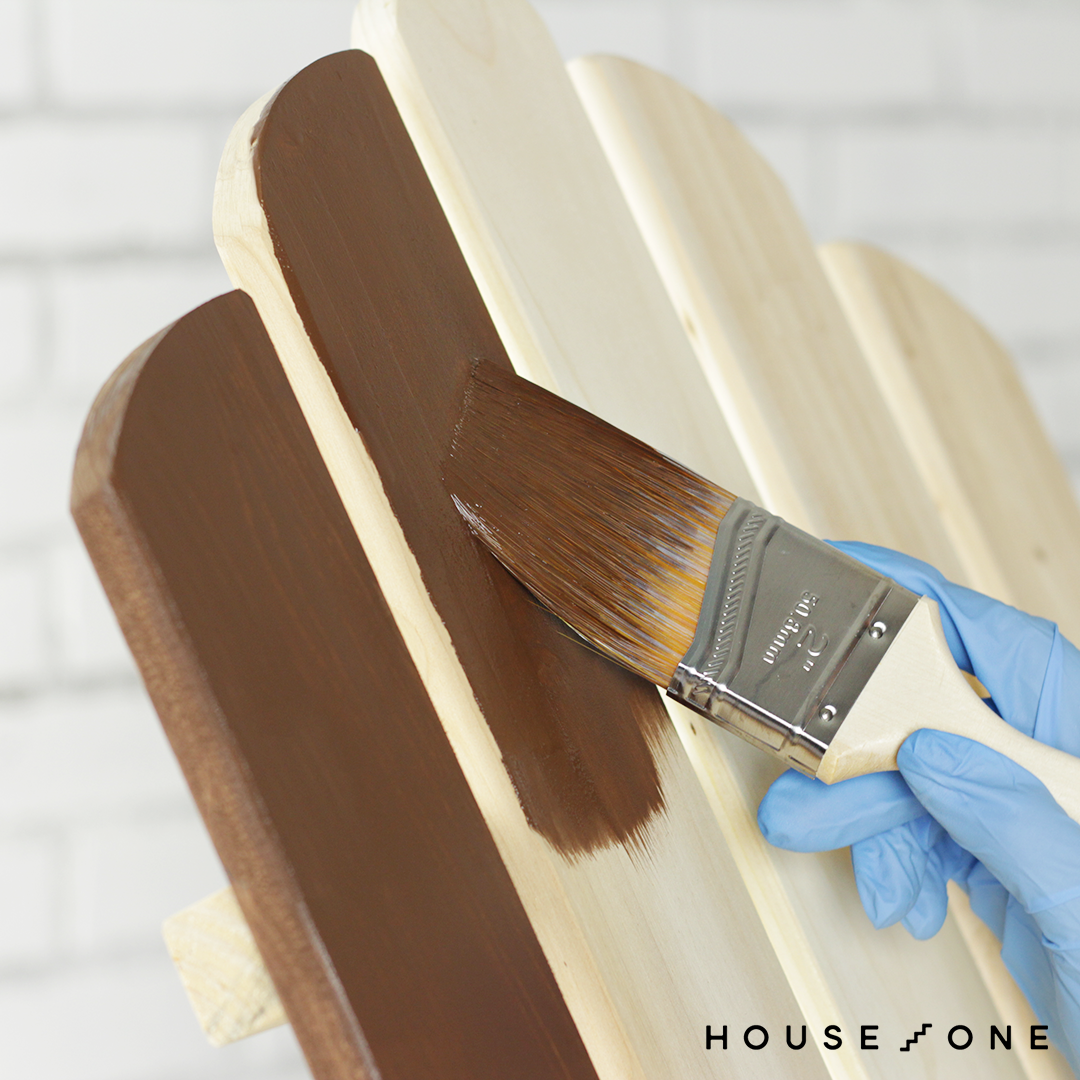
Clean the Chair
Check that your chair is clean, dry, and dust-free. If the chair is new and unfinished, a quick wipe-down with a lint-free cloth should work, but for older chairs, follow these steps:
- Wash the chair with mild soap and water to remove dirt and debris.
- Rinse thoroughly with clean water.
- Allow the chair to dry completely (at least 24 hours) before staining.
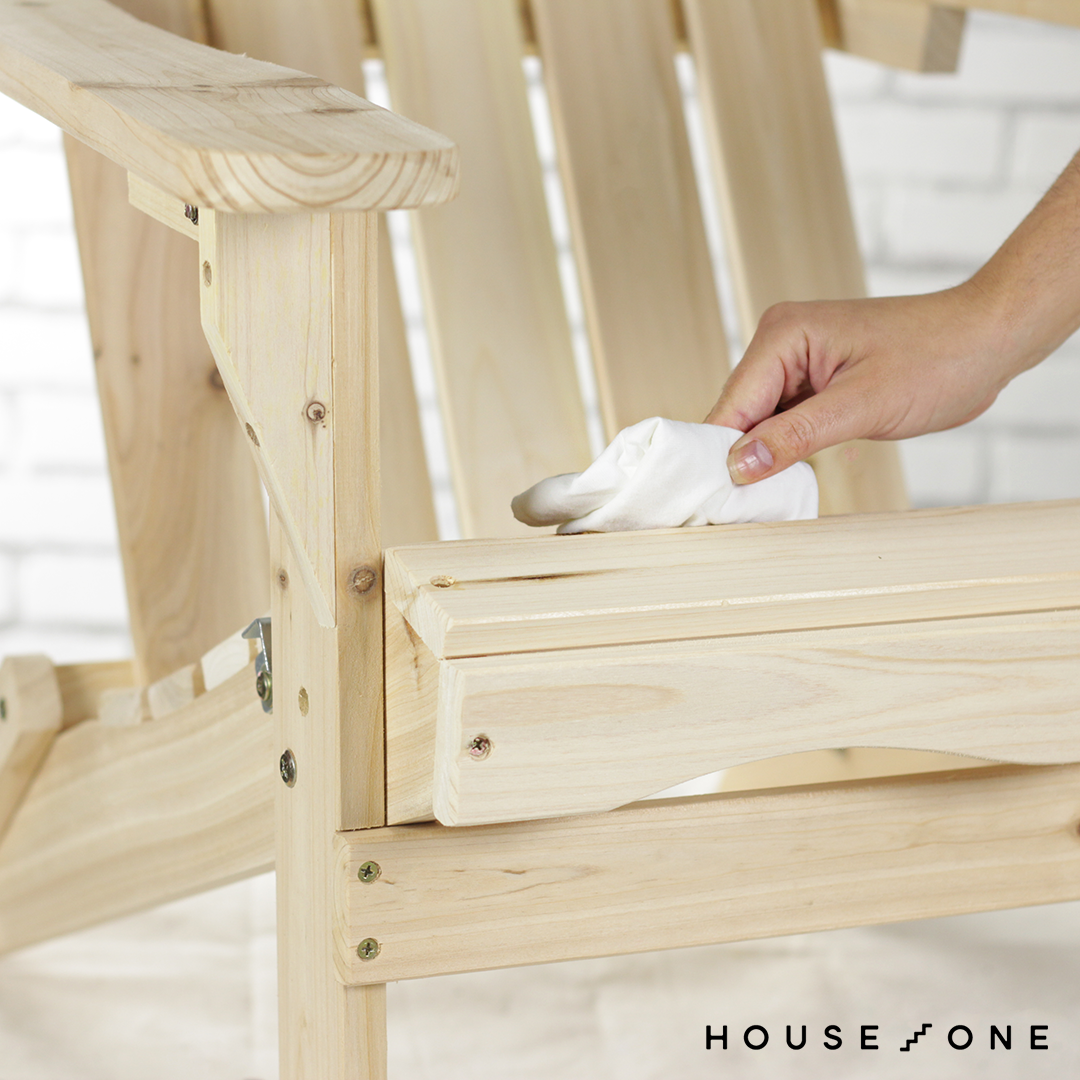
Sand if Necessary
If the chair has a rough surface or an existing finish:
- Sand the entire chair with medium-grit sandpaper (120-150 grit).
- Progress to fine-grit sandpaper (220 grit) for a smooth finish.
- Wipe away all sanding dust with a tack cloth or vacuum.
Applying the Stain
Now that your chair and workspace are prepared, it’s time to apply the stain.
Prepare the Stain
Slowly open the can of stain to avoid creating bubbles. Using a paint stir stick, gently stir the stain, making sure to scrape the bottom of the can to mix in any settled pigment.
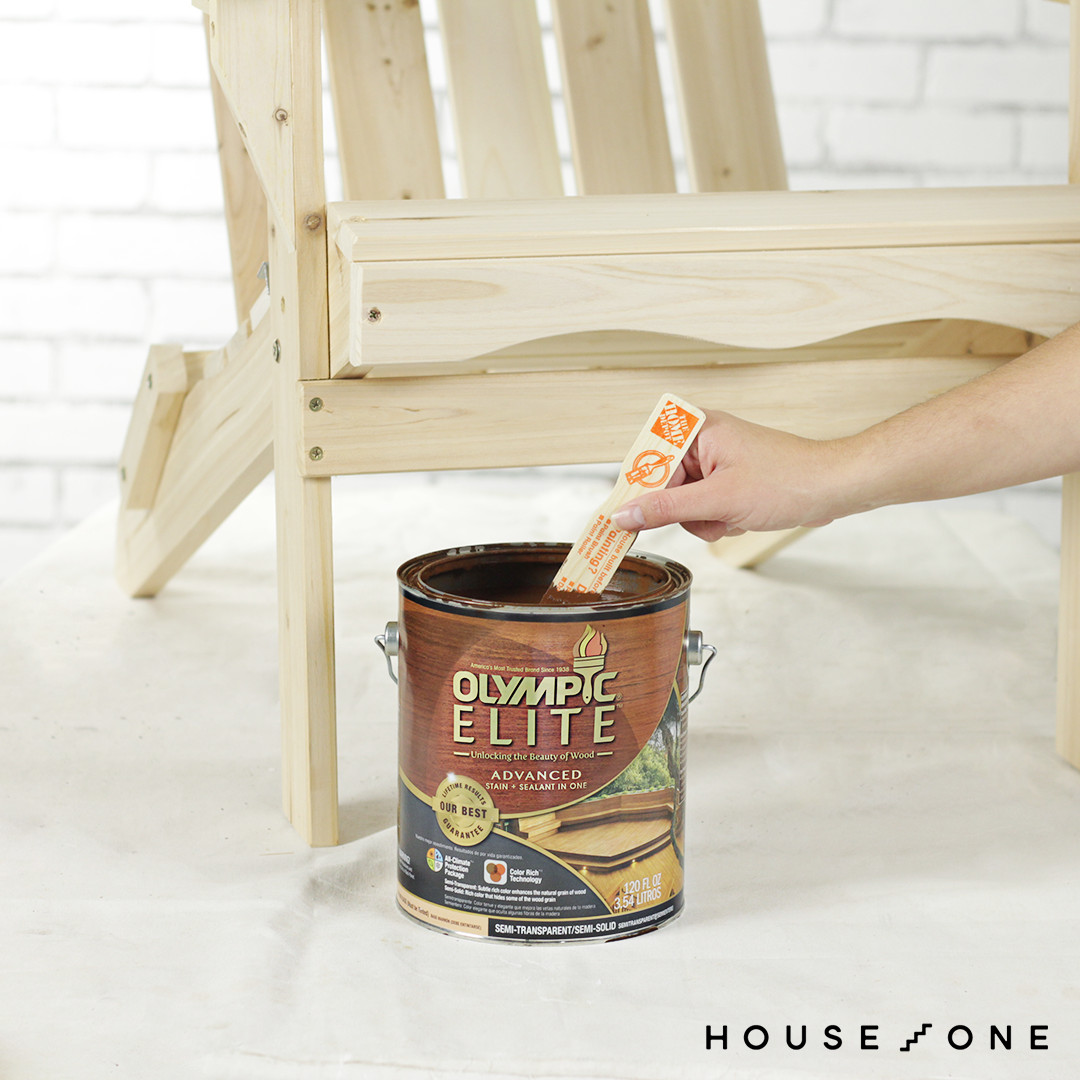
Staining Technique
- Dip the synthetic bristle brush into the stain, coating about half the length of the bristles.
- Start at the top of the chair and work your way downward to address any potential drips.
- Pull the brush across each board with a sweeping motion, following the wood grain.
- As the brush empties, run it over the edges at a 45-degree angle to tip off any drips.
- Work in gaps first, then coat the surrounding flat areas.
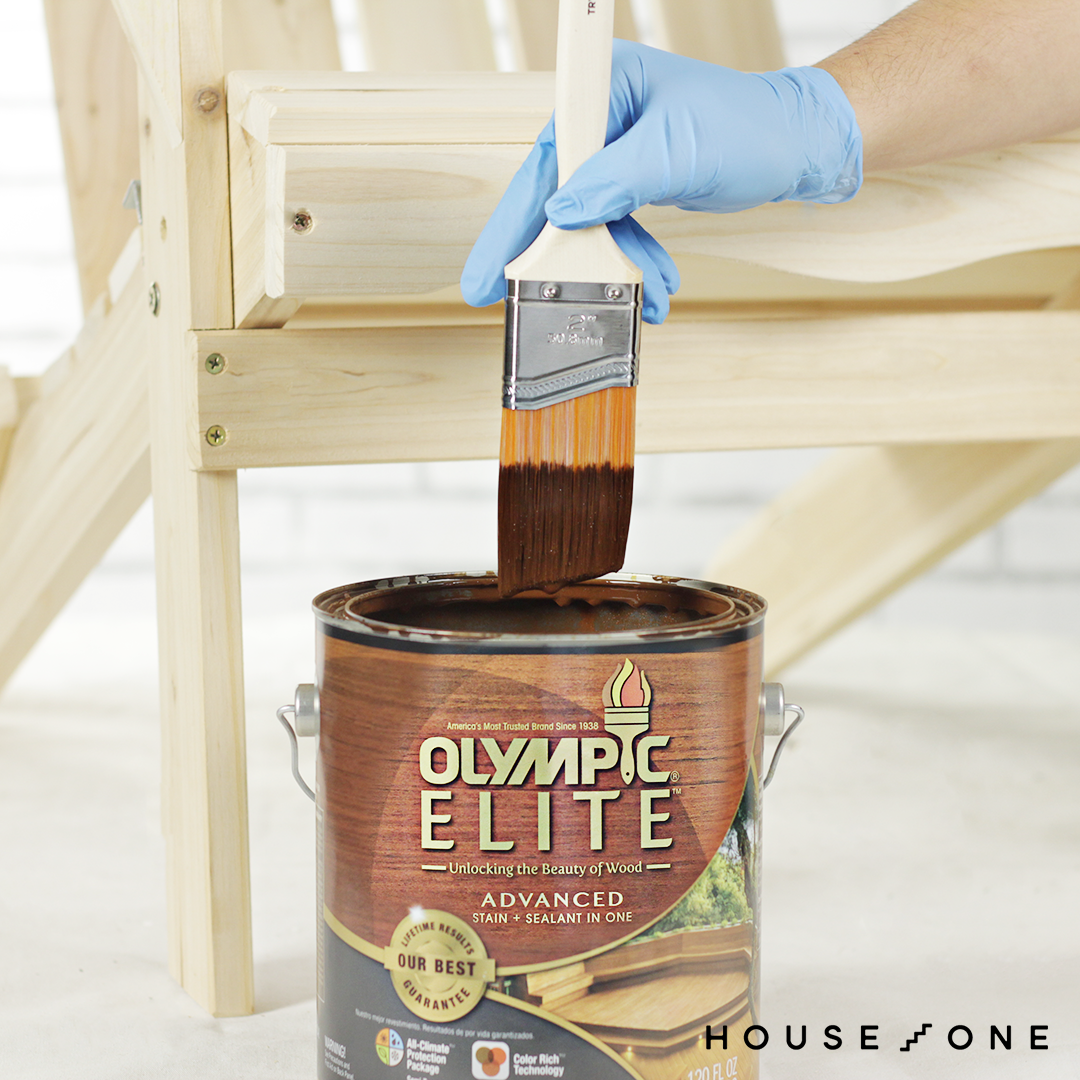
Achieving Even Coverage
For a more uniform finish, maintain a wet edge by overlapping each stroke slightly and work in small sections, completing one area before moving to the next. By keeping a wet edge, you prevent the stain from drying unevenly, which can create lap marks (lines or streaks where two applications overlap) or darker spots where the stain was reapplied.
The key to maintaining a wet edge is to work at a pace that keeps the stain from drying before you’ve covered the adjacent area. High temperatures or low humidity can cause the stain to dry more quickly, making it harder to maintain a wet edge. Adjust your technique or work in a cooler, more humid environment if possible.
Check for any missed spots or uneven application areas as you go.
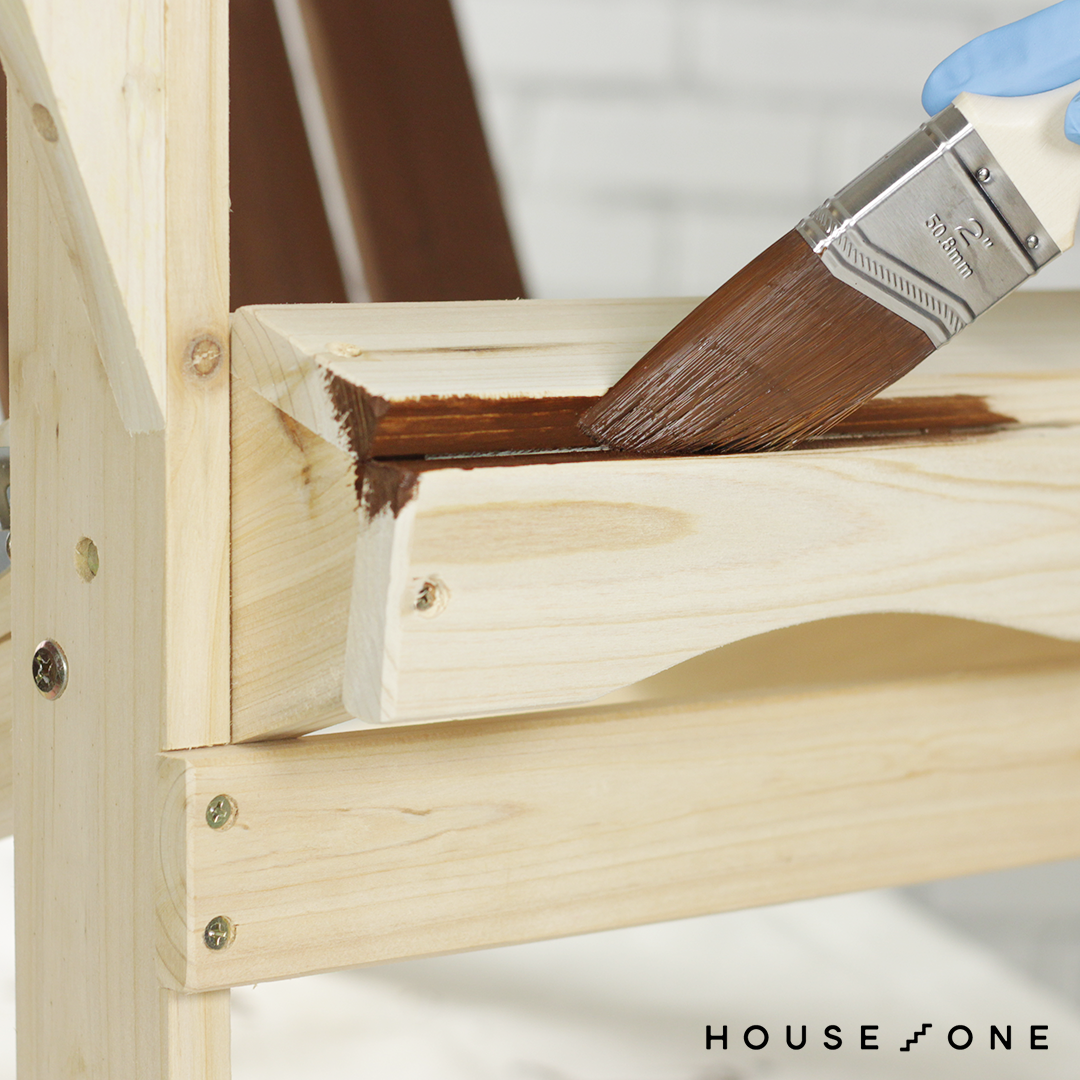
Drying and Additional Coats
Allow the stain to dry completely, which usually takes up to 24 hours. If needed, flip the chair once it’s dry to coat the underside, being careful not to drip stain onto the finished surfaces. Most stains provide enough protection with a single coat. However, if you want a deeper color or additional protection, you may apply a second coat after the first has fully dried. Use the same techniques to achieve an even, clean result.
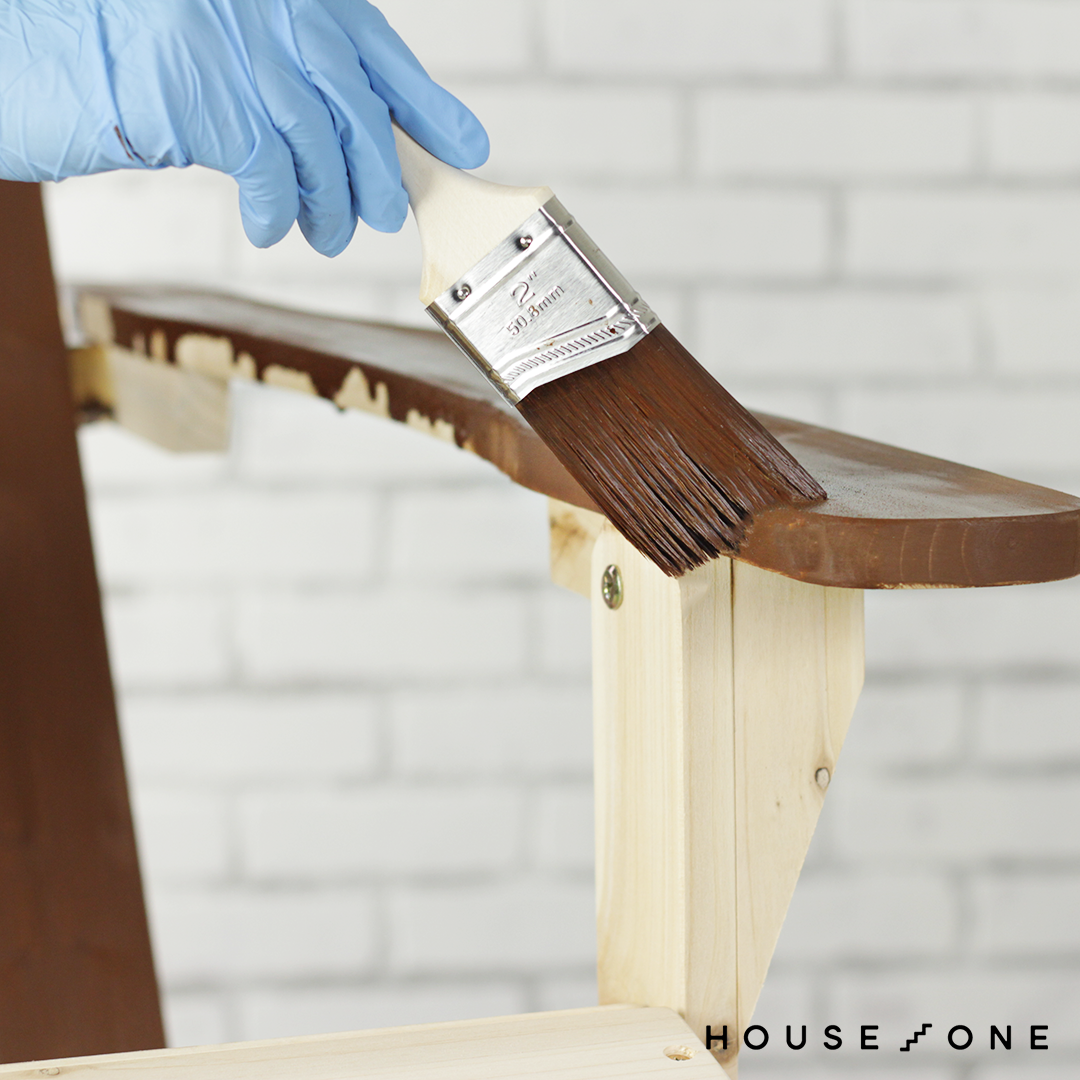
Maintaining Your Stained Adirondack Chair
To keep your newly stained Adirondack chair looking its best, we suggest following a few maintenance steps. Clean your chair with mild soap and water as needed, avoiding harsh chemicals and abrasive cleaners or brushes that could damage the stain. Reapply your stain every two to three years on average, and store your chair indoors or cover it during harsh weather conditions.
